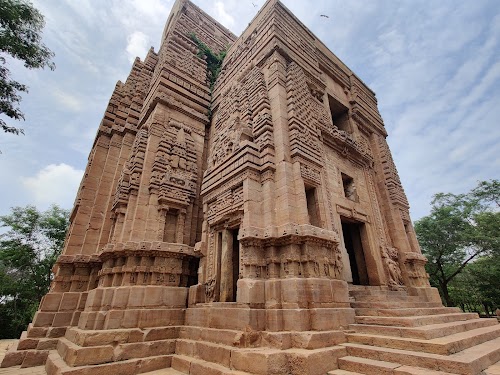
Teli Ka Mandir
Gwalior, India
- Admire the unique architectural style
- Capture panoramic views of Gwalior city
- Explore the intricate carvings and sculptures
- Learn about the temple's historical significance
- Visit nearby attractions within Gwalior Fort
Known for:
Description:
Teli Ka Mandir, a unique architectural marvel, stands atop Gwalior Fort as the tallest structure within its walls. Unlike typical Hindu temples, it showcases a distinctive blend of architectural styles. Its Dravidian-style barrel-vaulted roof is a striking contrast to the Indo-Aryan features of other structures in the fort. Dedicated to Lord Vishnu, this 8th-century temple captivates visitors with its intricate carvings, imposing gateway, and the sheer scale of its construction. The temple offers panoramic views of the surrounding city, making it a must-visit destination for history buffs, architecture enthusiasts, and spiritual seekers alike. Its weathered facade whispers tales of centuries past, inviting you to delve into the rich heritage of Gwalior.
History:
Constructed in the 8th century during the reign of Mihira Bhoja of the Gurjara-Pratihara dynasty, Teli Ka Mandir's origins are somewhat shrouded in mystery. The term 'Teli' suggests a connection to the 'oil merchant' community, possibly indicating their contribution to the temple's construction or patronage. The temple witnessed numerous historical events, including invasions and periods of neglect. It underwent restoration efforts in the late 19th century by Major Cole, which helped preserve its grandeur. Despite the ravages of time and conflict, Teli Ka Mandir stands as a testament to the artistic and architectural prowess of its creators and a symbol of Gwalior's enduring legacy.